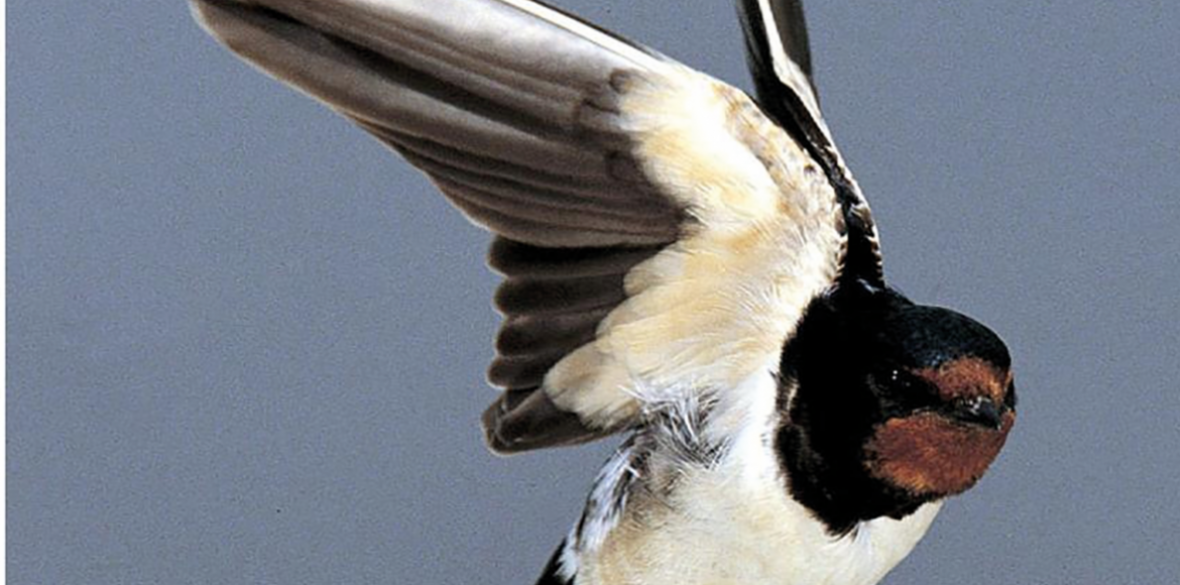This is the last article you can read this month
You can read more article this month
You can read more articles this month
Sorry your limit is up for this month
Reset on:
Please help support the Morning Star by subscribing here
VERY soon we will be observing the return of swallows to our shores. These are iconic birds, symbolising the arrival of summer and idyllic sunny days to come.
Sadly, the numbers of these birds have been declining over recent decades as a direct result of the calamitous decline of insects, their sole food source.
In my childhood I remember having to regularly clean the car’s windscreen on long journeys because it became caked with the bloody and sticky corpses of insects.
Today, you can travel for miles with hardly a single fly or moth splattered on the windscreen: another red-light warning of our present environmental crisis if one is needed.
Today, we know that these birds overwinter in Africa during the winter months, to return each spring to breed. But in ancient times, there was much speculation about where they suddenly disappeared to at the end of summer.
To establish the facts took many centuries of observation and investigation by natural historians. Which brings me to the subject of natural history.
It's an odd term, “natural history,” as if there is also an “unnatural history.” According to one authoritative definition, natural history is “the domain of inquiry involving organisms including animals and plants in their natural environment, leaning more towards observational than experimental methods of study.”
It is one of those hybrid areas of knowledge, a mixture of science and simple curiosity, open to amateurs and experts.
In Britain we have a long tradition of natural history enthusiasts, writers and activists. This is probably due to the fact that in Britain, largely as a result of its colonial exploits and early capitalist development, significant numbers of people could enjoy ample leisure time as a result of their wealth to devote time to such pursuits.
One of the most significant contributions to English natural history was made by parson naturalists, above all Gilbert White, who wrote about plants, animals, and other aspects of nature.
Clearly, country clergy also had plenty of time on their hands for observing nature! During a period of rising scepticism about Biblical truths and belief in an omniscient god, the religious authorities were keen to find evidence to buttress the creation myth.
Most of these cleric-naturalists wrote about nature in order to underline the natural theology argument for the existence of God.
White is widely considered to be the father of natural historians in this country, and his celebrated book, The Natural History of Selborne, has never been out of print since it was first published in 1789.
White set a precedent for accurate observation and recording. He kept a detailed diary of the wildlife he found and observed in and around the village, where he was the parish vicar.
At the time, it was still a common belief that our avian summer visitors, like swallows, martins and swifts, overwintered at the bottom of ponds, to re-emerge each spring.
White was the first person to properly study the behaviour of this group of birds, particularly their arrival and departure times.
The birds’ behaviour had always been a conundrum for scientists. It seemed ridiculous to think that such small birds could possibly travel vast distances.
And even such a keen observer as White refused to believe that so potent a symbol of the English countryside could ever leave our shores.
Already in AD79, the Roman savant, Pliny the Elder, had no doubt that swallows migrated to “neighbouring countries,” such as Egypt or Libya, where they sought “sunny retreats … on the mountainsides.”
This observation seems to have been lost in the centuries that followed. Some, like 17th-century non-conformist Charles Morton, even argued that swallows spent their winters on the moon.
As he explained in his Compendium Physicae, it was an obvious conclusion. Everyone knew that swallows disappeared in winter; but no-one knew where to.
They didn’t seem to hide in their nests, in the fissures of trees, or even at the bottom of ponds. He therefore reasoned that they must be where no-one could find them — namely, on the moon.
Morton was well aware that Galileo had found mountains and seas on the Moon 70 years earlier, and he’d probably read Francis Godwin’s The Man in the Moone (1638), in which an imaginary traveller meets birds on its surface.
We have come a long way since then. White’s work, grounded on real observation, set an example to all who followed in his footsteps. It also led to the setting up of Selborne societies throughout the country.
It was White’s focus on the behaviour of wildlife as much as the physical appearance of plants and animals that made him unique in the field of natural history at the time.
He patiently observed the behavioural patterns of birds, flowering times of plants, even the hibernation routines of his pet tortoise Timothy, purely for the joy of understanding them.
His contemporaries and precursors across Europe had focused on morphological differences between species to categorise them or considered them only by their use to humans either as food or medicine.
But as any naturalist today knows, behaviour can be as big a clue to species identification as detailed physical characteristics.
A keen ornithologist, White was also the first to discern that the willow wren (or what we know today as the willow warbler) was actually three separate species — chiffchaff, willow warbler and wood warbler — based on their different songs.
Today, natural history is no longer the preserve of the wealthy and privileged, and has become a hobby occupation of the many, from the millions who take part in the RSPB’s Big Garden Birdwatch to gardeners planting insect-friendly wildflowers.
So don’t forget to keep your eyes skinned for the first swallows to arrive this year and perhaps even begin to keep your own nature diary.












